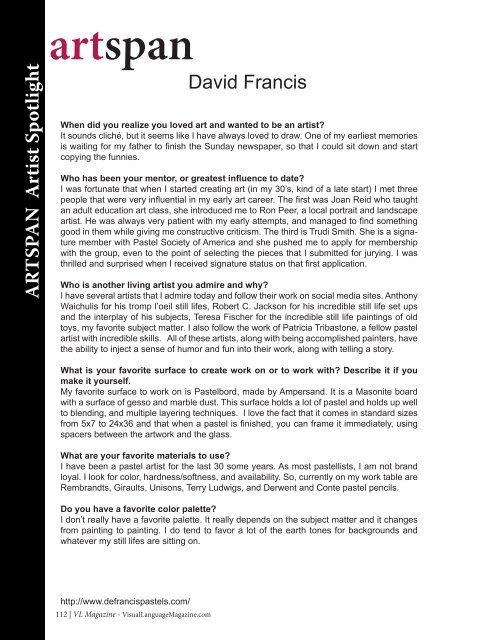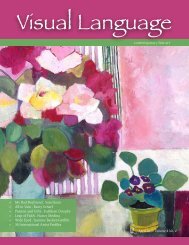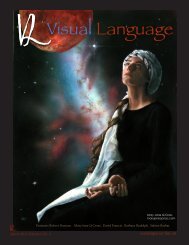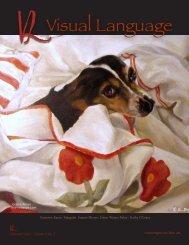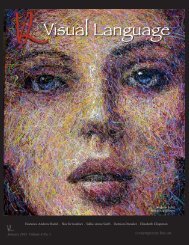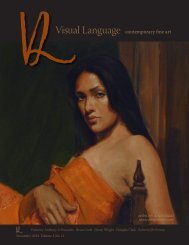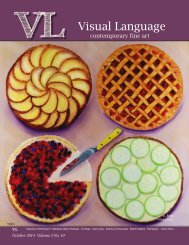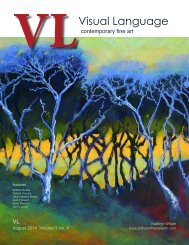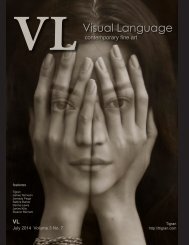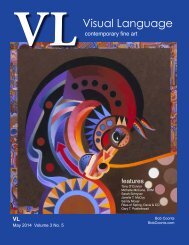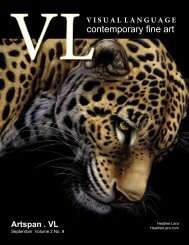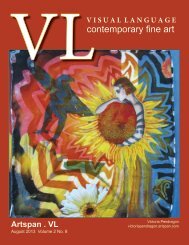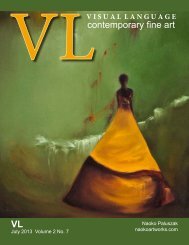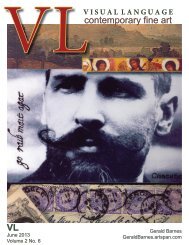Visual Language Magazine Contemporary Fine Art March 2014 Vol 3 No 3
Visual Language Magazine is a contemporary fine art magazine filled with dynamic international fine art, brilliant colors and stimulating composition. Cover Artist is Texas Artist, Alejandra Castanon. Enjoy his bright contemporary painting. In addition featured this month is Jeanne Illenye, Mary Jane Q Cross,Rebecca Zook, David Francis, Alejandro Castanon and Hall Groat. Enjoy Artspan Photographer Suzanne Stevenson with her beautiful nature photography. Also featured are artists of both CFAI.co and Artspan. Enjoy featured artists from both CFAI.co and Artspan. Visual Language is the common connection around the world for art expressed through every media and process. The artists connect through their creativity to the viewers by both their process as well as their final piece. No interpreters are necessary because Visual Language Magazine crosses all boundaries.
Visual Language Magazine is a contemporary fine art magazine filled with dynamic international fine art, brilliant colors and stimulating composition. Cover Artist is Texas Artist, Alejandra Castanon. Enjoy his bright contemporary painting. In addition featured this month is Jeanne Illenye, Mary Jane Q Cross,Rebecca Zook, David Francis, Alejandro Castanon and Hall Groat. Enjoy Artspan Photographer Suzanne Stevenson with her beautiful nature photography. Also featured are artists of both CFAI.co and Artspan. Enjoy featured artists from both CFAI.co and Artspan. Visual Language is the common connection around the world for art expressed through every media and process. The artists connect through their creativity to the viewers by both their process as well as their final piece. No interpreters are necessary because Visual Language Magazine crosses all boundaries.
You also want an ePaper? Increase the reach of your titles
YUMPU automatically turns print PDFs into web optimized ePapers that Google loves.
ARTSPAN <strong>Art</strong>ist Spotlightartspan<br />
David Francis<br />
When did you realize you loved art and wanted to be an artist<br />
It sounds cliché, but it seems like I have always loved to draw. One of my earliest memories<br />
is waiting for my father to finish the Sunday newspaper, so that I could sit down and start<br />
copying the funnies.<br />
Who has been your mentor, or greatest influence to date<br />
I was fortunate that when I started creating art (in my 30’s, kind of a late start) I met three<br />
people that were very influential in my early art career. The first was Joan Reid who taught<br />
an adult education art class, she introduced me to Ron Peer, a local portrait and landscape<br />
artist. He was always very patient with my early attempts, and managed to find something<br />
good in them while giving me constructive criticism. The third is Trudi Smith. She is a signature<br />
member with Pastel Society of America and she pushed me to apply for membership<br />
with the group, even to the point of selecting the pieces that I submitted for jurying. I was<br />
thrilled and surprised when I received signature status on that first application.<br />
Who is another living artist you admire and why<br />
I have several artists that I admire today and follow their work on social media sites. Anthony<br />
Waichulis for his tromp l’oeil still lifes, Robert C. Jackson for his incredible still life set ups<br />
and the interplay of his subjects, Teresa Fischer for the incredible still life paintings of old<br />
toys, my favorite subject matter. I also follow the work of Patricia Tribastone, a fellow pastel<br />
artist with incredible skills. All of these artists, along with being accomplished painters, have<br />
the ability to inject a sense of humor and fun into their work, along with telling a story.<br />
What is your favorite surface to create work on or to work with Describe it if you<br />
make it yourself.<br />
My favorite surface to work on is Pastelbord, made by Ampersand. It is a Masonite board<br />
with a surface of gesso and marble dust. This surface holds a lot of pastel and holds up well<br />
to blending, and multiple layering techniques. I love the fact that it comes in standard sizes<br />
from 5x7 to 24x36 and that when a pastel is finished, you can frame it immediately, using<br />
spacers between the artwork and the glass.<br />
What are your favorite materials to use<br />
I have been a pastel artist for the last 30 some years. As most pastellists, I am not brand<br />
loyal. I look for color, hardness/softness, and availability. So, currently on my work table are<br />
Rembrandts, Giraults, Unisons, Terry Ludwigs, and Derwent and Conte pastel pencils.<br />
Do you have a favorite color palette<br />
I don’t really have a favorite palette. It really depends on the subject matter and it changes<br />
from painting to painting. I do tend to favor a lot of the earth tones for backgrounds and<br />
whatever my still lifes are sitting on.<br />
http://www.defrancispastels.com/<br />
112 | VL <strong>Magazine</strong> - <strong>Visual</strong><strong>Language</strong><strong>Magazine</strong>.com


